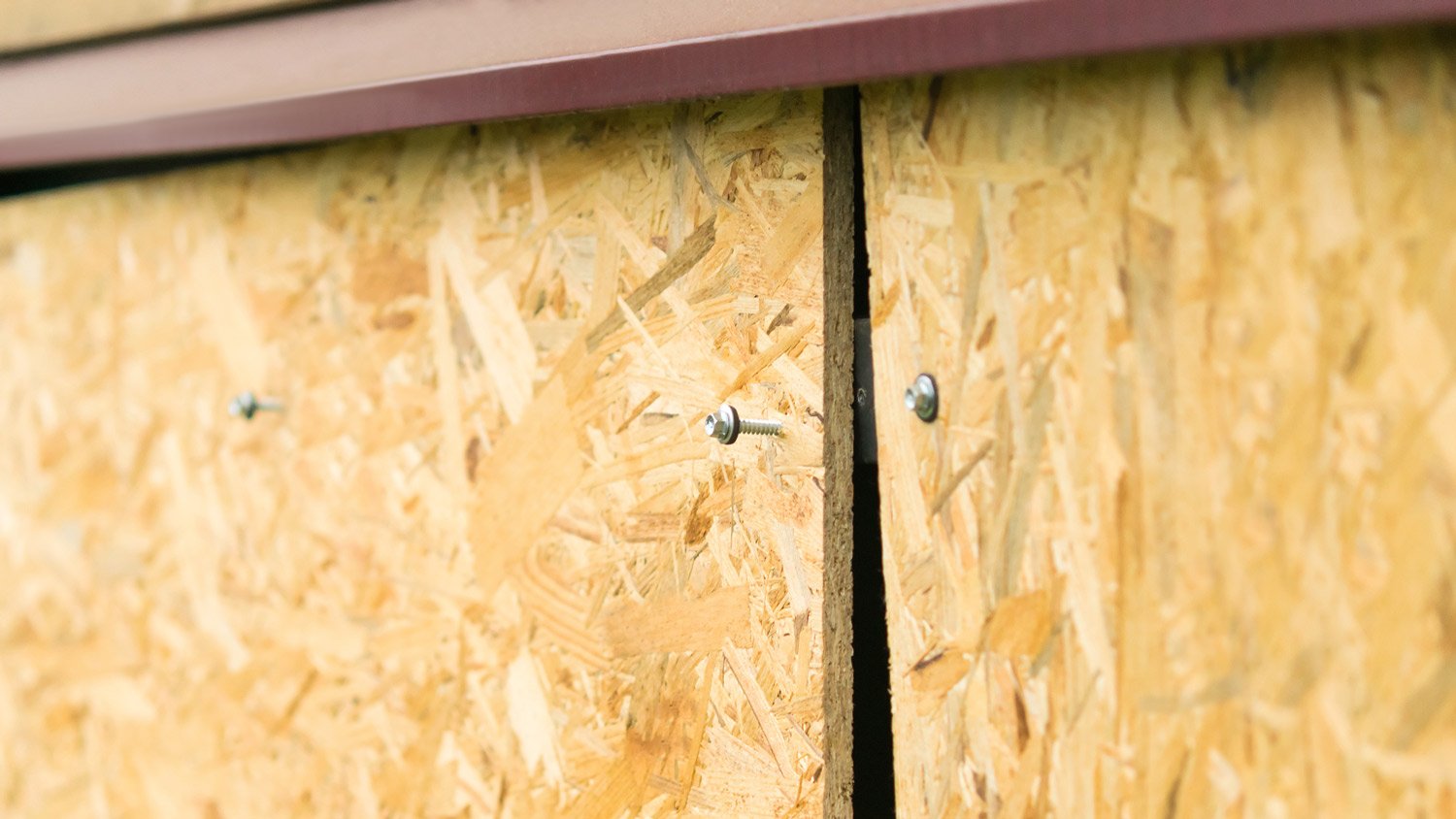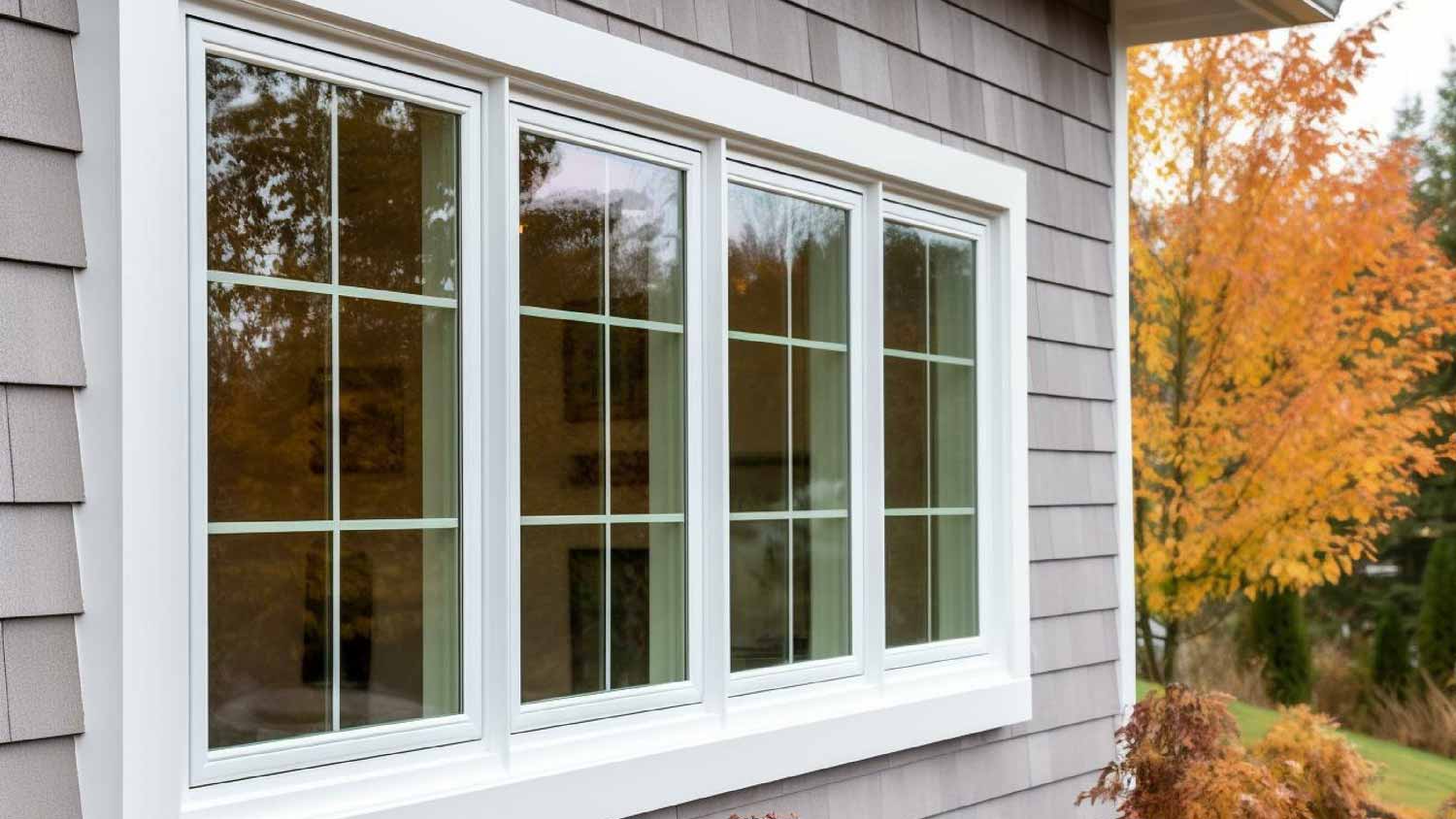
Hurricane shutter costs vary widely depending on many factors. Explore our breakdown of the elements that impact what you’ll pay for hurricane protection.
A short and definitely worthwhile DIY


Hurricane season starts in June and runs through November. While hurricanes occur more frequently along the Gulf Coast and Southeastern U.S., they occasionally make their way north. If you live in an area that doesn't usually experience hurricanes—or you’re a newcomer to a storm-prone area—but a storm is coming your way, act fast to protect your home. Here's how to board up windows for hurricane protection.

If a hurricane is headed your way, the information is likely all over the news, and people are buzzing about it on social media. Keep a close eye on the weather forecast and start boarding up your windows once the weather service issues a hurricane watch.
Don’t wait too long to start, because a delay can cause issues. You don’t want to find out you’re low on supplies or get stuck trying to work in heavy rain or winds. Allow 30 minutes per window for the installation. Depending on your home’s size and number of stories, the project could take three hours or longer.
Get your plywood, nails, screws, and bolts before hurricane season hits your area. Since plywood is the most common material for DIY hurricane shutters, it could fly off the shelves once your location is under a hurricane watch. In the long run, you can call a hurricane shutter installer near you for a permanent, more effective solution.
The type of plywood you buy matters for your plywood hurricane shutters. The Federal Alliance for Safe Homes (FLASH) recommends buying exterior-grade boards (CDX) instead of oriented strand boards (OSB). Additionally, the plywood should be at least 5/8 inches thick. You should be able to find the right boards that meet these requirements at a home improvement store.
The size of your home and the number of windows determine how much plywood you need and the total cost to board up your windows, which averages between $50 and $100 per window.
Plywood boards measure 4-by-8 feet and can be cut to size. Depending on the size of your windows, you can cover two or more with a single board.
Along with plywood, you'll need to purchase mounting materials. The bolts and screws you need depend on the type of material your home is made from. If you have vinyl siding, choose hanger bolts, preferably rust- and corrosion-resistant ones. If you have a brick or stone home, look for barrel bolts, similar to what you'd use to close a fence or as a lock on a closet door.
If you can’t find plywood right before a big storm, suitable alternatives include corrugated metal and polycarbonate panels.
Boarding up your home's windows is a project you can DIY if you're handy, but it's not a project you can do solo. Plywood is heavy and can be unwieldy, especially when you're working with larger boards. Recruit a friend or two to help you out.
Learning how to hurricane-proof your home will help protect your house and make it safer. Here are the five steps you need to follow to board up your windows before an incoming storm hits. Your home’s siding type will influence the materials and work.
Count up the total number of windows in your home. Include windows you might overlook, such as those on an exterior door or garage door.
Make a list of the windows in your notepad, and label each one with a number. For example, the windows on the front of your home can be F1, F2, and so on. The windows on the back wall of your home can be B1, B2, and so on.
Measure each window's height and width. If your home has vinyl or wood siding, add 8 inches to each measurement to account for an overhang. Use the exact measurement of the inside window frame if you have a brick or stone home. Then, record the measurements on your window list.
Refer to your list of window measurements, then measure and mark the dimensions of your first window on a plywood board. Double-check your measurements before you cut to make sure they're correct.
Put on your safety glasses and gloves, then use a circular saw to cut the first piece of plywood to the right size. Label the board so you know which window it belongs to. Repeat with the remaining boards until you have enough to cover all your windows.
Sand the plywood to smooth out the edges and reduce the chance of getting a splinter while you work. If you have time, use the paint roller to apply a coat of sealant to the side of the board that will face the outside. You can skip this step if the storm is fast approaching.

How you hang the plywood depends on the exterior of your home.
Drill corrosion-resistant, stainless steel hanger bolts into the framing along the window's top, sides, and bottom. (Note: If your windows have a sill that juts out, you can rest the plywood on top of the sill and don't need to drill the bolts into it). Space the bolts 16 inches apart.
Drill holes in the plywood to line up with the hanger bolts. Place the holes at least 1 inch from the edge on all sides. Push the plywood against the window, lining up the bolts with the predrilled holes. Use nuts and washers to attach the board securely to the window.
Once the storm has come and gone and you get the all clear from local authorities, remove the nuts and washers and take the plywood down. You can leave the hanger bolts in place in case another hurricane comes along.
Attach 4-inch barrel bolts to the plywood. Space each bolt 16 inches apart on all four sides.
Place the plywood inside the window frame. Line up the keeper (the other half of the barrel bolt) with the bolts that are on the plywood. Place the keeper against the exterior wall. Use a masonry bit to attach the keeper to the wall with screws.
Slide the bolt plungers into the keepers to securely attach the plywood to the wall.
Once the storm is over and you have the all clear, carefully slide the plungers out of the keepers and remove the plywood from the windows.
Store the plywood boards, plus the nuts and washers, in an area where they'll be protected from rain and wind. A shed or garage can be a good storage space, so long as they aren’t overly humid.
Hanging plywood on your windows before a hurricane costs less than installing most types of hurricane shutters. However, plywood isn’t a long-term option. If you live in an area that only sees the occasional hurricane, boarding up your windows can be the way to go. You can keep the plywood and may only need to use it once a year, if not less.
If your home is in a hurricane-prone area, hiring a pro to install hurricane shutters or hurricane-resistant windows is the better option, even if it costs more up-front. The average cost of storm windows is $12,000.
The average cost of hurricane shutters is $3,700, which is a lot more than the $100 to $500 you might spend on plywood. But shutters and storm windows are long-lasting solutions and are more convenient when you live in an area that sees multiple hurricanes throughout the season. Plus, when you install hurricane windows, you get peace of mind knowing that your home is protected from major winds and terrible storms, whether you're there to put up plywood or not.
From average costs to expert advice, get all the answers you need to get your job done.

Hurricane shutter costs vary widely depending on many factors. Explore our breakdown of the elements that impact what you’ll pay for hurricane protection.

Get expert insights on shutter repair cost, including average prices, key cost factors, and tips to save money on your next shutter repair project.

Hurricane fabric installation is a great way to keep your home safe during hurricanes. Hurricane fabric is made to protect against damage, including water.

What is hurricane window film, and is it actually a viable option for home hurricane protection? Find out the facts and pros and cons of hurricane film here.

If you’re preparing to install storm windows, here are the questions you can expect from a contractor about the project. Have these answers ready beforehand.

Protecting your home and belongings from a hurricane is critical. Learn about plywood hurricane shutters, how to use them, and when to choose an alternative.